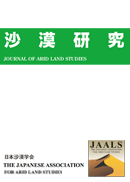Volume 32, Issue 4
Displaying 1-4 of 4 articles from this issue
- |<
- <
- 1
- >
- >|
Special Reports
-
2023Volume 32Issue 4 Pages 131-132
Published: March 30, 2023
Released on J-STAGE: March 30, 2023
Download PDF (288K) -
2023Volume 32Issue 4 Pages 133-139
Published: March 30, 2023
Released on J-STAGE: March 30, 2023
Download PDF (5945K) -
2023Volume 32Issue 4 Pages 141-147
Published: March 30, 2023
Released on J-STAGE: March 30, 2023
Download PDF (2607K) -
2023Volume 32Issue 4 Pages 149-155
Published: March 30, 2023
Released on J-STAGE: March 30, 2023
Download PDF (928K)
- |<
- <
- 1
- >
- >|
